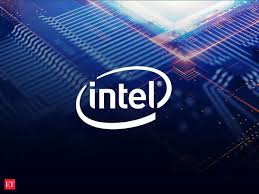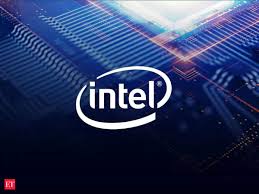
With consumers choosing to purchase cheaper laptops while spending on data center usage was cut down upon by pandemic hit businesses and governments, United States based chip maker Intel reported a fall in its profit margins in the latest completed quarter.
Despite being the dominant global player in manufacturing and supplying of processor chips for PCs and data centers, Intel has in recent times suffered because of manufacturing delays. For example, the company admitted in July this year that its plans for development and production of the next generation of chipmaking technology were running behind schedule by six months.
Despite a rising demand for chip, the demand form customers is more for the cheaper lower priced chips instead of the high-performance but pricier ones from Intel. That dragged down the overall gross margins for the company.
Because of the novel coronavirus pandemic more people and students worked and studied from home which gave Intel a boom in the form of surging laptop sales. The company beat estimates by FactSet for its sales in its PC group which came in at $9.8 billion while analysts had expected it to be at $9.09 billion.
But as the company sold a much larger than usual volume of less-profitable chips in its PC business, it brought down the operating margins of the company to 36 per cent during the third quarter compared to 44 per cent in the same period a year ago.
“You’re seeing the demand shift from desktops and higher-end enterprise PCs to the entry-level consumer and education PCs,” Chief Financial Officer George Davis told the media in an interview. “Even though the volume is good, your (average selling prices) are coming down, so that impacts your gross margins a little bit.”
A similar trend also hit the data center business of the company with government and business customers significantly reducing their spending by a total of almost 47 per cent, Davis said. This business segment of the company had witnessed growth for two quarters. The operating profits for the data center business of the company also dropped to 32 per cent during the third quarter compared to 42 per cent in the same quarter a year ago. The revenue generated from this business unit also dropped by 7 per cent to $5.9 billion in the reported quarter compared to estimate of analysts of $6.21 billion, according to FactSet.
Davis said that some of the shortfall was made up by business growth in cloud computing customers and spending by operators of 5G networks, the chips sold to those businesses were also lower priced.
“The main issue for Intel moving into 2021 remains gross margin pressure and further deterioration of its leadership position due to its process node roadmap delays,” KinNgai Chan, analyst with Summit Insights Group.
Excluding items, it earned $1.11 per share, in line with estimates, according to IBES data from Refinitiv.
(Source:www.reuters.com)
Despite being the dominant global player in manufacturing and supplying of processor chips for PCs and data centers, Intel has in recent times suffered because of manufacturing delays. For example, the company admitted in July this year that its plans for development and production of the next generation of chipmaking technology were running behind schedule by six months.
Despite a rising demand for chip, the demand form customers is more for the cheaper lower priced chips instead of the high-performance but pricier ones from Intel. That dragged down the overall gross margins for the company.
Because of the novel coronavirus pandemic more people and students worked and studied from home which gave Intel a boom in the form of surging laptop sales. The company beat estimates by FactSet for its sales in its PC group which came in at $9.8 billion while analysts had expected it to be at $9.09 billion.
But as the company sold a much larger than usual volume of less-profitable chips in its PC business, it brought down the operating margins of the company to 36 per cent during the third quarter compared to 44 per cent in the same period a year ago.
“You’re seeing the demand shift from desktops and higher-end enterprise PCs to the entry-level consumer and education PCs,” Chief Financial Officer George Davis told the media in an interview. “Even though the volume is good, your (average selling prices) are coming down, so that impacts your gross margins a little bit.”
A similar trend also hit the data center business of the company with government and business customers significantly reducing their spending by a total of almost 47 per cent, Davis said. This business segment of the company had witnessed growth for two quarters. The operating profits for the data center business of the company also dropped to 32 per cent during the third quarter compared to 42 per cent in the same quarter a year ago. The revenue generated from this business unit also dropped by 7 per cent to $5.9 billion in the reported quarter compared to estimate of analysts of $6.21 billion, according to FactSet.
Davis said that some of the shortfall was made up by business growth in cloud computing customers and spending by operators of 5G networks, the chips sold to those businesses were also lower priced.
“The main issue for Intel moving into 2021 remains gross margin pressure and further deterioration of its leadership position due to its process node roadmap delays,” KinNgai Chan, analyst with Summit Insights Group.
Excluding items, it earned $1.11 per share, in line with estimates, according to IBES data from Refinitiv.
(Source:www.reuters.com)





